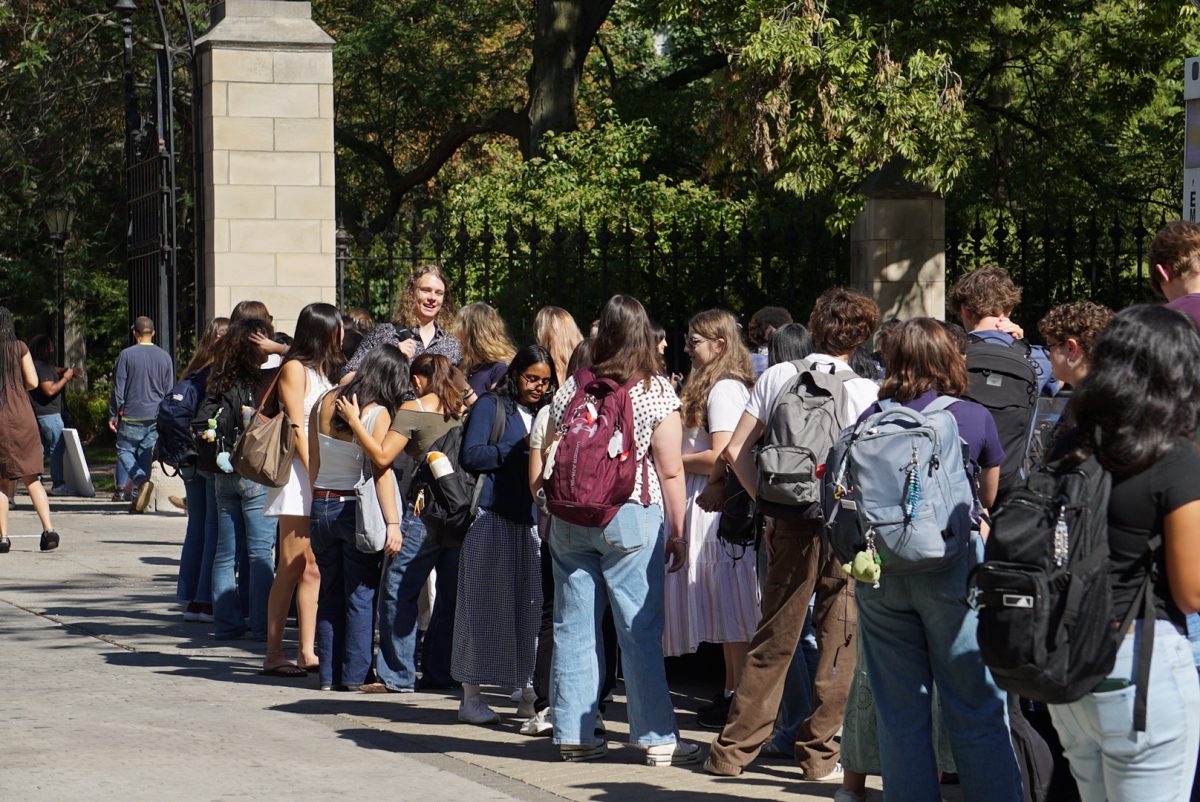Every detail matters for archeological filmmaker Farzin Rezaeian, whose new documentary was 2,500 years in the making. In Persepolis Recreated, Rezaeian switches between real-life images and computer simulations to create a complete interpretation of ancient Persepolis, which was destroyed by Alexander the Great in 450 B.C.
To present details like the palace’s carpets and the columns’ ornamentations, Rezaeian used artifacts excavated from the Persepolis site. With these artifacts, some of which are held in the Oriental Institute, Rezaeian projected certain designs and patterns that he then presented in the film. One carpet pattern was created from scraps preserved in the ice of southern Siberia.
“There is no single person in the whole wide world who knows exactly what Persia looked like, but there are presumptions, theories, and bits and pieces that we used. We had good contact with many world-renowned specialists,” he said.
Dr. Matthew Stolper of the Oriental Institute was one of those specialists. He played an important role in the film by translating ancient clay tablets that had records of transactions for workers on the site. His findings helped lead to the conclusion that no slaves were used in the building of Persepolis. Rezaeian also said that some women were paid twice as much as men and even had supervising positions.
Farzin Rezaeian spoke with awe when describing the ancient city of Persepolis. “It was governed in a very spectacular way,” he said. The city was one of the four capitals of ancient Persia. At its peak, the empire was governed by Darius the Great, and stretched from present-day India to Egypt. It encompassed 80 percent of the known world at the time.
“This kind of atmosphere is quite interesting—to see that 28 nations were under the rule of one man,” Rezaeian said. The advanced empire even had “the first kind of Pony Express,” he said, which ran 2,800 kilometers from central Iran to the Mediterranean Sea.
In 1992, Rezaeian began a project to chronicle Iranian civilization from prehistory to the end of the 19th century in seven documentaries. During his research, Rezaeian became particularly interested in Persepolis. “It was so impressive that we decided to start our work there,” he said.
The 40-minute film leads the viewer on a tour of the buildings—much as a visitor two and a half thousand years ago would have seen them. “Persepolis had more of a ceremonial rather than a political connotation,” Rezaeian said, adding that the city was only used a few times a year.
According to Rezaeian, Persepolis was coined “the richest city under the sun,” and was an ostentatious spectacle constructed to impress its guests.
The film will premiere at 6 p.m. and 8 p.m. Wednesday in Breasted Hall of the Oriental Institute. Rezaeian chose to premiere the documentary at the University because of the close ties that the Oriental Institute has to the project. “Of the 70 scholars consulted for this project, five or six were from the University of Chicago,” Rezaeian said.
Rezaeian’s next project is a documentary called, “Seven Faces of a Civilization,” which examines periods of history from 4000 B.C. to the end of the nineteenth century.
He gave no timeline for its completion.








